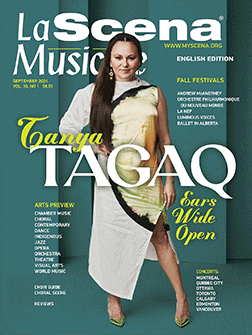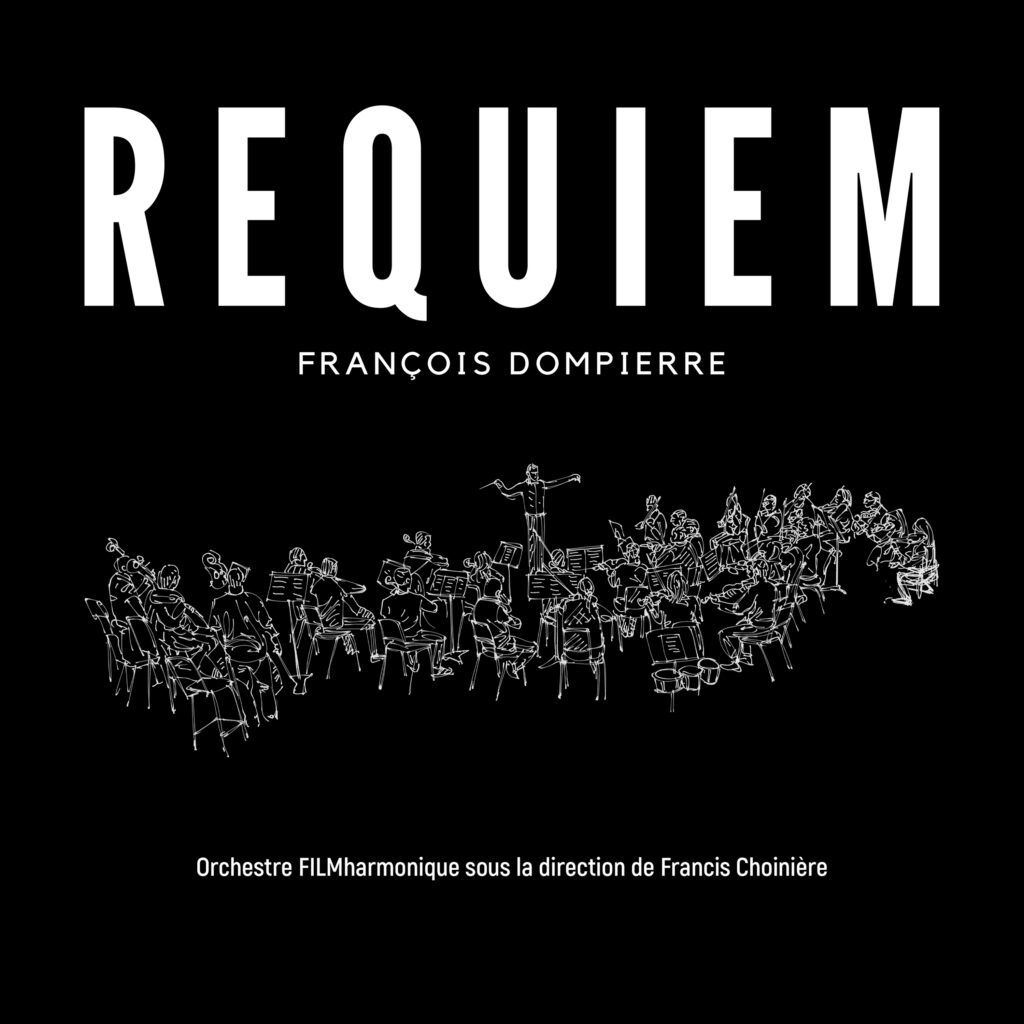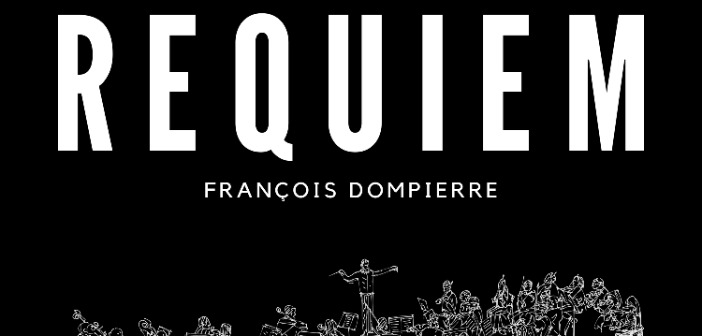
-
Let Artists Be5
François Dompierre — RequiemMyriam Leblanc, soprano; Andrew Haji, tenor; Geoffroy Salvas, baritoneOrchestre FILMharmonique and Ensemble ArtChoral; Francis Choinière, conductorLet Artists Be, 2024

François Dompierre’s Requiem is nothing short of cinematic in nature. Its 12 liturgical texts are set in a manner that takes the listener on a journey through a plethora of sonic environments that are unexpected but seamlessly blend with the character of the Requiem genre. The French horn carries the opening Kyrie with its moving response gestures to the choir. This, of course, comes after the magnificent string opening—two broken dissonant chords are closed by a grand perfect cadence before the choir enters. This setting preserves the ancient text with familiar conventions but explores new musical textures and timbres.
The Dies Irae opens with an industrial soundscape led by percussion. The metallic rhythms are accompanied by the choir whispering a syncopated setting of the text, which is again overlayed with a more melodic line in the soprano. These film score-esque soundscapes continue through each movement, bringing a unique theme to the Requiem genre that still manages to preserve the integrity and significance of the sacred texts. Movement X, Lux Aeterna, forgoes some of the dense textures used previously.
The choir opens unaccompanied, focusing on the round, clean sound characteristic of this movement’s text. Even here, modernity is not lost, as the choir’s contemporary harmonic structures are interspersed with a joyful motif from the piano. As the movement continues, the accompaniment moves from contrasting to supportive, returning the spotlight to the singers’ expert delivery of the text.
The final movement, In Paradisum, is perhaps the most traditional. Dompierre trades his previous thick orchestral textures for the harp, and opens with a soprano solo. The strings bring in a taste of the previous harmonies, but they soon mesh with the diatonic structure signaled by a shift to pizzicato accompaniment. This movement is reminiscent of the quieter moments found in classical Requiems, both honoring tradition and tying together the cinematic narrative found in Dompierre’s modern idiom. Ensemble ArtChoral and Orchestre FILMharmonique offer a gorgeous rendition of Dompierre’s work, bringing a tasteful modern flair to a genre that is a sacred part of the classical canon.














